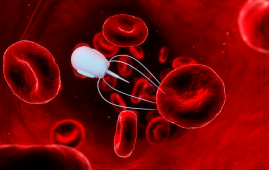

A Promising Shift in Glioblastoma Care
Glioblastoma focused ultrasound is emerging as one of the most promising breakthroughs in neuro-oncology. A landmark multi-center trial led by the University of Maryland School of Medicine (UMSOM) demonstrated that MRI-guided focused ultrasound, paired with standard temozolomide therapy, improved overall survival by nearly 40% in patients with the deadliest brain tumor. This is the first clinical evidence showing that safely opening the blood–brain barrier can enhance chemotherapy delivery and significantly impact patient outcomes.
“Our results are very encouraging. Using focused ultrasound to open the blood-brain barrier and deliver chemotherapy could significantly increase patient survival, which other ongoing studies are seeking to confirm and expand.” – Graeme Woodworth, MD, study principal investigator, Professor and Chair of Neurosurgery at UMSOM and Neurosurgeon-In-Chief at the University of Maryland Medical Center (UMMC)
How Focused Ultrasound Strengthens Chemotherapy Delivery
Opening the Blood–Brain Barrier for Better Drug Access
In this rigorously conducted trial of 34 postoperative glioblastoma patients, researchers used MRI-guided focused ultrasound to temporarily open the blood–brain barrier before administering chemotherapy. Participants were matched to a control group of 185 patients who received standard temozolomide alone.
The outcomes were striking:
- Progression-free survival: Nearly 14 months vs. 8 months in the control group
- Overall survival: More than 30 months vs. 19 months in controls
Researchers also observed that barrier opening enabled liquid biopsy detection, allowing circulating biomarkers, DNA fragments, proteins, and tumor-associated molecules to reach the bloodstream. These biomarkers are closely aligned with patient outcomes, offering a new non-invasive pathway for disease monitoring.
Explore All Oncology CME/CE Conferences and Online Courses
Safer Monitoring, Wider Treatment Possibilities for Glioblastoma
A New Diagnostic and Therapeutic Pathway in Neuro-Oncology
By allowing targeted chemotherapy delivery and making liquid biopsy feasible, this technology introduces a modernized approach to glioblastoma care that may extend beyond temozolomide. Future trials could evaluate drugs previously considered ineffective due to blood–brain barrier limitations.
Researchers from UMSOM, Harvard, University of Toronto, UVA, and West Virginia University jointly contributed to this groundbreaking work, signaling a shift in how clinicians may soon diagnose, monitor, and treat glioblastoma.
What This Means for Clinicians and Future Care
The study’s leaders emphasize that this technique could redefine outcomes for the 15,000 Americans diagnosed each year. With ongoing research, including the LIBERATE trial, clinicians may soon have access to improved monitoring tools and expanded therapeutic options.
Source:
more recommended stories
 Protein Pair Guides Chromosome Alignment in Mitosis
Protein Pair Guides Chromosome Alignment in MitosisKey Points A joint research team.
 Magnetic Nanorobots Enhance Tumor Drug Delivery
Magnetic Nanorobots Enhance Tumor Drug DeliveryCancer remains one of the leading.
 New Drug STF-1623 Shows Promise in Treating Solid Tumors
New Drug STF-1623 Shows Promise in Treating Solid TumorsSTF-1623 Transforming ‘Cold’ Tumors into ‘Hot’.
 Targeting Cancer Cell Memory Boosts Chemotherapy
Targeting Cancer Cell Memory Boosts ChemotherapyResearchers double chemotherapy effectiveness through chromatin.

Leave a Comment